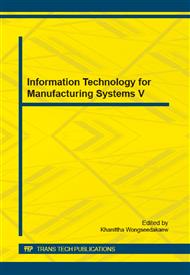p.503
p.507
p.513
p.517
p.522
p.529
p.535
p.540
p.549
Liquid-Solid Coupling Characteristics in the Fluidized Bed Evaporator for Tobacco Refined Liquid
Abstract:
Consider a two-phase liquid-solid coupling effect, using Euler - Euler two-fluid model is solved using standard viscous term with k-ε model and the velocity pressure coupling a simple algorithm to simulate liquid-solid two-phase flow characteristics of the fluid flow method bed, the applicability of the model to assess the drag. Different effects of a two-stage flow characteristics of fluidized bed flow characteristics, fluid and operating conditions affect the physical properties of the paper. We found from the simulation is the use of different drag coefficient models will greatly affect the results, which drag force model Syamlal - O'Brien is more suited to study the coupling characteristics of liquid flow in a fluidized bed of solid than Gidaspow. And velocity of the inert particles increase with the viscosity of the liquid increase. Further, the maximum speed of the inert particles in a fluidized bed by a central, which means the settling velocity in the fluidized bed of inert particles is the slowest; increasing liquid density and lead to increased speed of the inert particles; volume of the inert particles Score changes can also affect the speed of the particle velocity distribution, and there is no linear relationship.
Info:
Periodical:
Pages:
522-528
Citation:
Online since:
October 2014
Authors:
Price:
Сopyright:
© 2014 Trans Tech Publications Ltd. All Rights Reserved
Share:
Citation:


